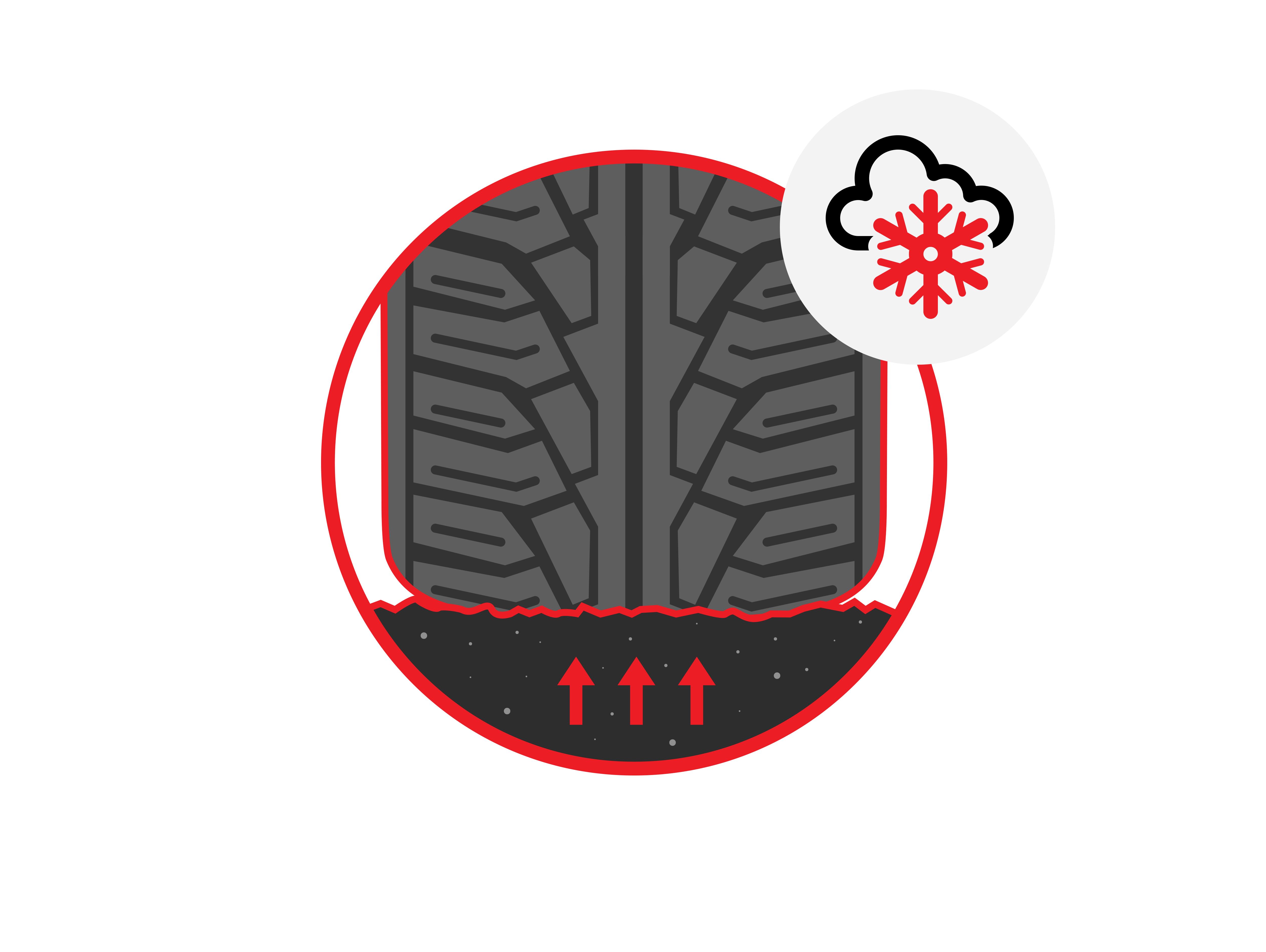
A question we’re often asked is “do I need winter or all-season tyres?” The answer is, it depends. On quite a few things.
Your location
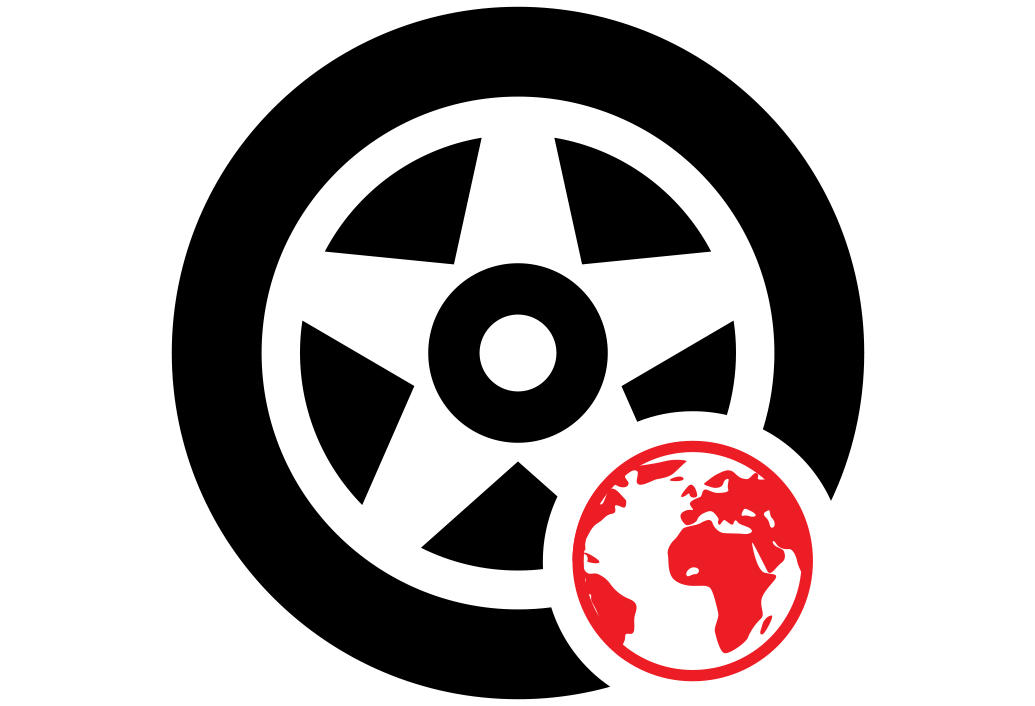
Different countries have different regulations when it comes to winter tyres. In some, it’s mandatory to fit them, while in others it’s recommended. For those living in milder temperatures, such as in the UK, they’re rarely necessary. So, the first thing to check is whether winter tyres are legally required in your country. If conditions are particularly harsh, and winter tyres are compulsory, there’s no choice about fitting winter or all-season tyres, you will have to swap from winter to summer every six months or so.
Your local weather

If your local law says that winter tyres are recommended but not compulsory, you need to make your own decision about winter or all-season tyres, depending on the sorts of conditions you regularly drive in. Winter tyres are made from a high silica rubber compound with a tread pattern specifically designed to stay flexible in cold temperatures (below +7C). While they’re not ideal for all year round use, they give you the best possible protection in snow and ice.
Your average annual mileage
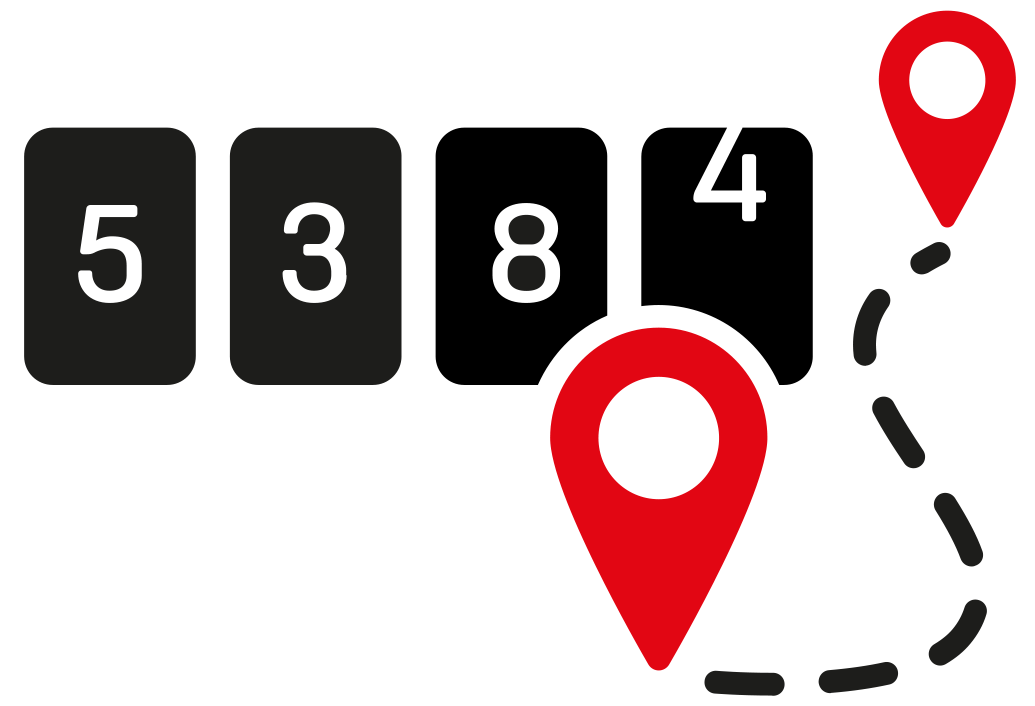
If you live somewhere where winter temperatures are not too extreme and you don’t drive very often, particularly in the winter, it may not be worth the cost of separate winter and summer tyres. All-season tyres, also known as all-weather tyres, avoid the hassle and cost associated with swapping tyres twice a year.
Weighing up the pros and cons
- Winter tyres cannot be used all year round. All-season tyres can.
- Winter tyres are specifically designed for snow, ice and cold roads. All-season tyres work better on wintry roads than summer tyres but are not as efficient in snow and ice as winter tyres are.
- It can be expensive to swap from winter to summer tyres. All-season tyres do not need to be swapped.
- In the same way that all-season tyres will never outperform winter tyres in cold weather, they won’t outperform summer tyres in warmer weather either.
How to buy winter tyres
Buying advice for winter tyres
If your winter driving tends to be in cold conditions where ice and snow are common, it makes sense to buy appropriate tyres. Here we explain everything you need to know about buying winter tyres.
What are the benefits of winter tyres?
Winter tyres are made from a specially developed compound that guarantees flexibility, even below +7 degrees C. They’re also designed to maximise traction when driving on snow and ice. They have deeper, wider treads than summer tyres and little grooves (called sipes) on the tread blocks.
How do I recognise a winter tyre?
Winter tyres feature two symbols: the letters M+S and a snowflake/mountain logo. M+S indicates that the tyre offers superior handling in mud and snow. You’ll also see this symbol on all-season tyres. The three-peak mountain and snowflake – also known as 3PMSF – only appears on winter tyres. It means that the tyre has passed a minimum required performance on snow, under EU Regulation 661/2009.
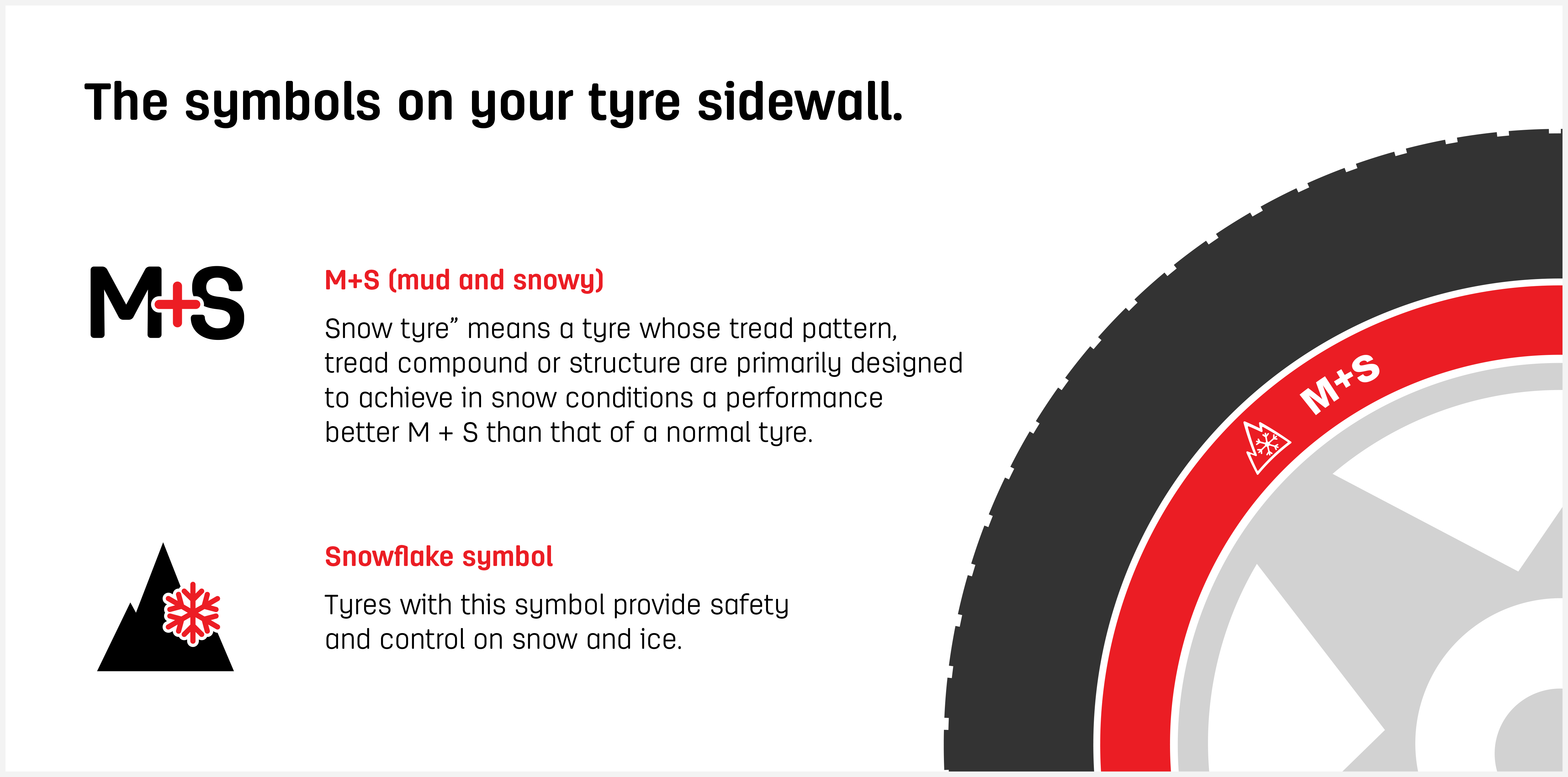
How do I know which winter tyre(s) to buy?
There are many things to consider so it’s a good idea to consult an expert. For example:
- What does your manufacturer recommend?
- What conditions will you be driving in?
- How frequently will you be driving on snow and ice and how common will it be that temperatures fall below +7 degrees C?
- What do the tyre tests say about the tyre’s snow grip, aquaplaning prevention and handling?
Find your nearest Uniroyal dealer
Can I get away with buying only two winter tyres?
Even though it’s not illegal, we strongly advise against mixing tyres as it can cause issues with safety. It can even be dangerous, leading to spinning or problems with cornering.
When should I buy and how often should I change my winter tyres?
It makes sense to buy at the end of summer, before the temperatures fall. That way you can fit them straight away and avoid any unnecessary storage costs. Don’t leave it too late, however, as you don’t want to be caught out if there’s a sudden drop in temperature. Whether you’re retrieving them from storage, or buying a new set, make sure you fit your winter tyres before temperatures go below +7 degrees C.
A good quality set of winter tyres should last for 4-5 years when switching every six months.
Please remember that, in some countries, it’s compulsory to fit separate summer and winter tyres. For more information, read our article ‘Where are winter tyres mandatory?’
Alloy wheels in winter
Buying advice for winter tyres
In most cases, the question of whether drivers should use aluminium or steel wheel rims is a matter of taste. While alloy wheels are eye-catching, steel rims are less expensive and more robust. But, how are the differences noticeable during the cold season? Which wheel rims are suitable for winter use?
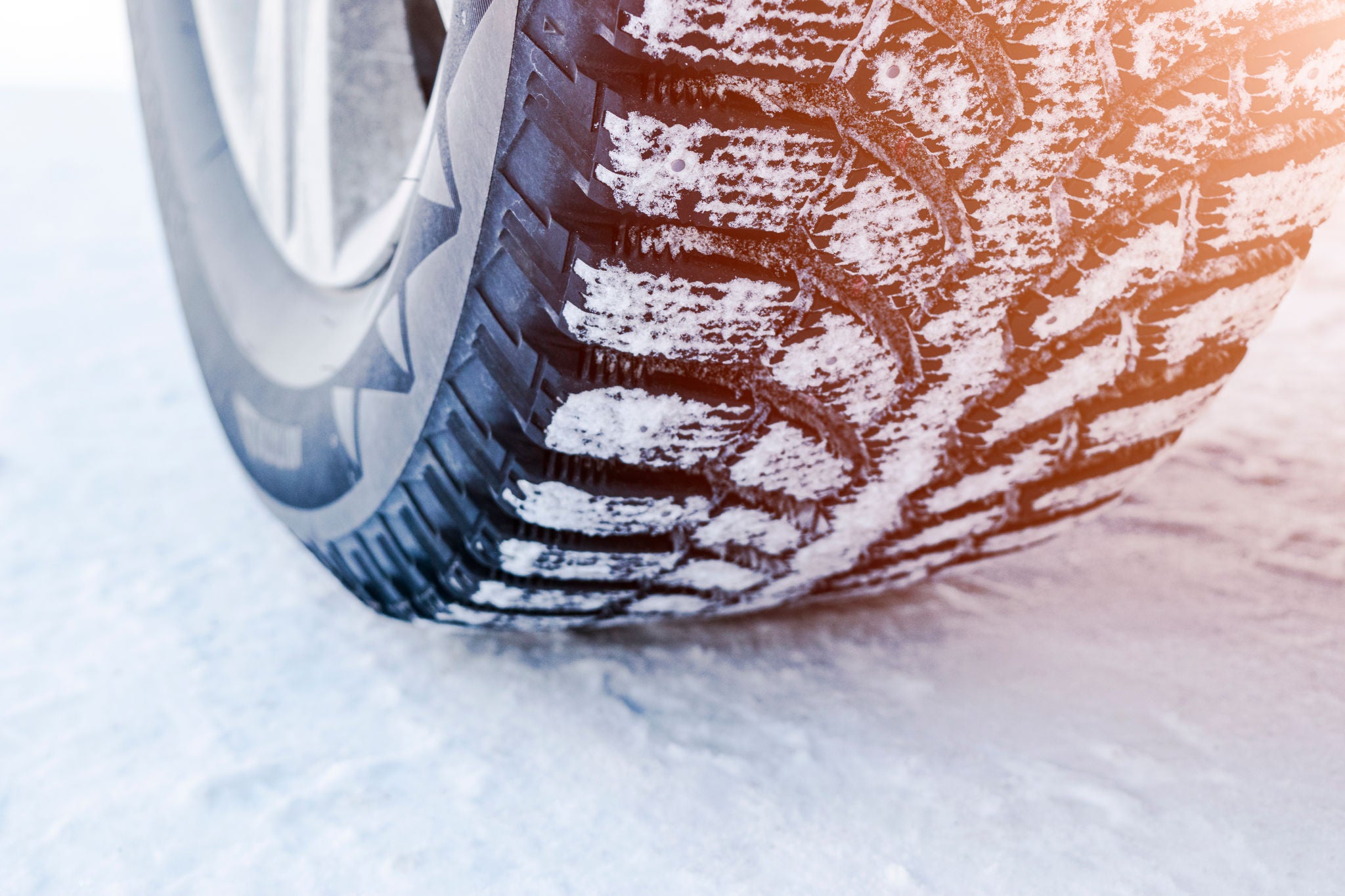
Aluminium or steel rims: Which wheel rims should you use for winter tyres?
Wheel rims are essential for the stability of the tyres. Whether the preference is for aluminium or the better option of steel – it is personal criteria such as price, quality and design that are decisive factors. One thing is certain: You see steel rims a lot more often because they cost less. On the other hand, many car drivers get a thrill from alloy wheels because of their sporty appearance. Still, are there any actual differences in performance – particularly during the cold season?
Anyone using new winter tyres can choose between alloy and steel rims. Alloy wheels score points with many drivers for their trendy appearance and abundance of individual designs – which is why they also want to show them off in winter. However, there is a possibility that they can pose a real danger. Of course, the tyres on the car are the deciding factor for road safety in the winter. Nevertheless, having the correct wheel rims for winter tyres also contributes to safety. Unfortunately, not all alloy wheels are suitable for winter conditions.
What are the differences between aluminium and steel rims?
Unlike durable steel wheels, the aluminium version is more prone to corrosion. This means that: in winter, alloy wheels can oxidise on the flange. The flange is the curved edge of the wheel rim. Without adequate coating, small bubbles will quickly develop. The affected areas will no longer provide proper sealing. This will ultimately result in gradual loss of tyre pressure, leading to unstable driving behaviour.
For those who place great importance on the visual aesthetics of their wheels, manufacturers now also offer winter-proof alloy wheels. These have a special powder coating that protects against damage and any possible oxidisation. For anyone who does not want to compromise on their aesthetic in winter, these models are strongly recommended.

On the safe side with steel rims
Steel rims with winter tyres present no safety risk, even without any additional treatment. On the contrary: the material is significantly more stable and thus less vulnerable to de-icing salt, grit etc. Steel rims do rust from time to time, but only on the surface and without affecting their stabilising properties. A sensible compromise is therefore to swap the rims with the tyres. In October, when it’s time to change over to winter tyres, it is best to switch from your alloy wheels to their steel equivalents.
Correct fitting of winter tyres on alloy or steel rims
Regardless of sporty aluminium or robust steel rims – ultimately the decision is down to the selection of suitable tyres for the wheels. If the tyre is too large or too small, it is quite possible that it will not fit on the desired wheel rim. An unstable assembly like this can lead to dangerous situations while behind the wheel. If, for example, you already have wheel rims and simply need winter tyres, you should definitely take note of this and only choose tyres that match the size of your wheel rims. Also remember that: Only winter tyres with rims with special coatings are suitable for use in mud and snow.
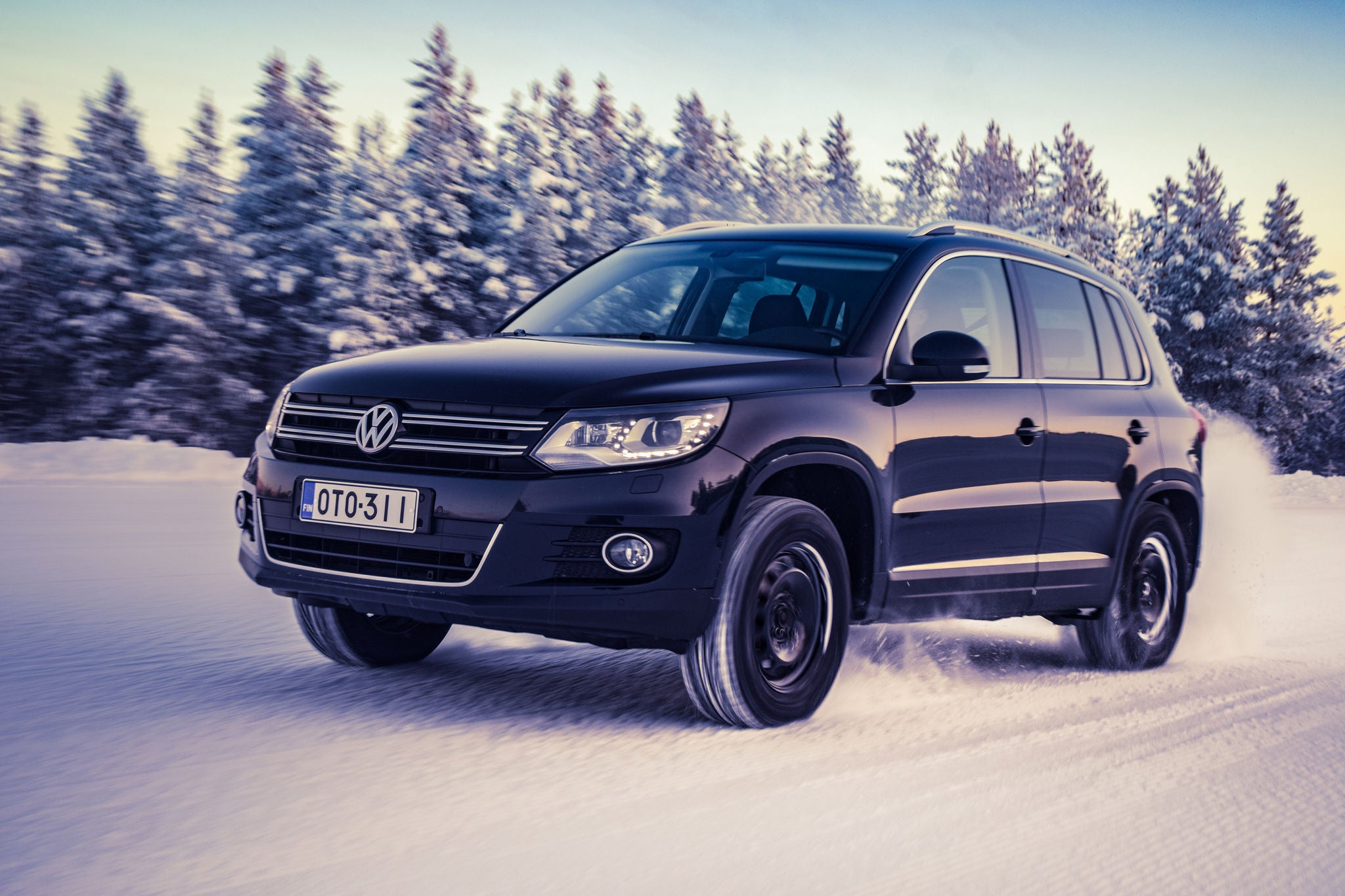
Tips
- Information about whether your alloy wheels are suitable for winter driving is generally available from the manufacturer. For this reason, you will often find this information in the product description or in other documentation supplied with the product. Incidentally: You can, of course, also drive with winter wheel rims in the summer so you can use them all year round. This doesn't just save you time and stress. Over time, frequent fitting and removal causes strain to the wheels and shortens their service life.
- It makes no difference to the winter tyre properties whether they are fitted on aluminium or steel wheel rims. The difference is only in their quality. While alloy wheels are usually somewhat lighter for winter conditions, steel rims provide additional robustness. On this point, you should avoid making false economies and either fit winter-proof alloy wheels or switch directly over to steel rims.
Should I buy winter tyres
Winter tyres are the ideal choice for winter
No one wants to spend more money than they have to, so it’s understandable that you might question the value of paying more for separate winter and summer tyres.
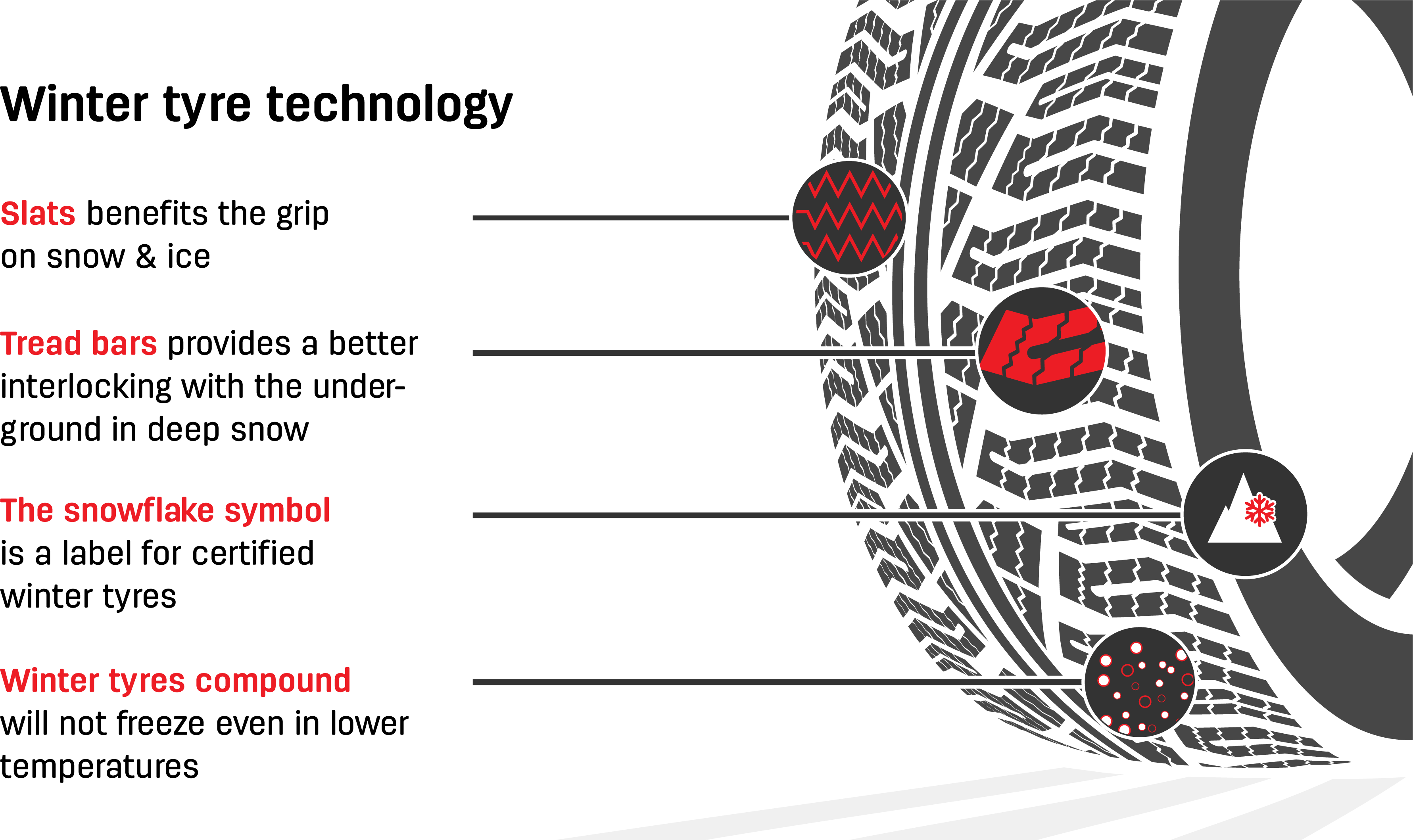
The fact is, deciding whether or not to buy winter tyres comes down to a number of things – and some are simply out of your hands. For example, location – which country or what terrain are you driving in? In some European countries winter tyres are mandatory. In others, they’re recommended. While in some countries, like the UK, the majority of drivers use summer or all-season tyres all year round.
Should I buy winter tyres?
Pros
- Improved grip,
- Better handling,
- And shorter braking distances in colder temperatures
Cons
- Under performance in temperatures over +7 degrees C
- Cost of swapping with summer tyres.
- Cost of storage
Assuming that you’re driving somewhere where they are not compulsory, you need to weigh up the pros and cons before asking yourself ‘should I buy winter tyres’?
Pros
- Winter tyres give you optimal handling in cold temperatures (below +7 degrees C).
- They offer the best possible grip on snow and slush.
- Their braking capabilities on cold roads are superior to summer or all-weather tyres. A car travelling at 31mph will take 62 metres (203ft) to stop on snow using summer tyres, 42 metres (138ft) using all-season tyres, but just 31 metres (102ft) when fitted with winter tyres.
- Due to their increased natural rubber content, they remain flexible in the cold whereas summer tyres are specialist for milder temperatures.
- They will keep you mobile if you live in a remote area where snow and ice are common occurences in the colder months.
- If you drive up and down hills you will certainly benefit from the additional grip winter tyres provide on snow and ice.
Cons
- Winter tyres cannot be used all year round – they under perform in temperatures over +7 degrees C and the wear rates could increase if used in warmer temperatures, due to a special compound mix.
- Committing to separate sets of summer and winter tyres (including spares) can be expensive. Not only is there the cost of two sets of tyres, including spares, but you may decide to have two separate sets of wheels too to save time and make switching over easier. Plus there is the potential costs of storage if you’re not able to store them yourself, and the garage expenses of having them swapped over every six months.
- Some insurers consider fitting winter tyres to be a modification and therefore charge a premium. It is important to check with your insurer before you change your tyres.
If you’re driving somewhere where winter tyres are mandatory, you obviously have no choice about whether or not to buy winter tyres. Similarly, if winter tyres are recommended, it makes sense to evaluate the cost versus the benefits of improved grip and safer driving in the conditions in which you’re likely to drive.
In countries where winter tyres are not compulsory, the decision often comes down to individual lifestyles and locations. For example, in Scotland, where temperatures are often cold and icy, there has been a recent increase in drivers buying winter tyres.
Winter tyres in summer
Find out the reasons for using summer tyres
Swapping tyres every six months or so can be costly but, in many countries, it’s compulsory. So why do it? Why not drive on winter tyres in summer or summer tyres in winter?
The simple fact is that their designs and compound are completely different and, as much as winter tyres are unsuitable in warmer weather, summer tyres can compromise safety in very low temperatures.
Winter tyres used in summer
- Winter tyres underperform in temperatures greater than 7 degrees C.
- They are less economical.
- They are less efficient.
- Their stopping distances are greater than summer tyres in warmer weather.
What’s wrong with winter tyres in summer?
Winter tyres are designed to stay supple in temperatures below +7 degrees C. Their deep tread patterns are optimised for snow and slush and their tread blocks are created for added traction in wet, wintery conditions. They’re unbeatable in cold temperatures. Read our article ‘What are winter tyres?’ for more detail.
However, when temperatures rise above +7 degrees C, summer tyres are a much more suitable option. Summer tyres have less natural rubber in their compounds and this makes them softer and stickier which is better for gripping wet and dry roads in milder temperatures.
The higher rolling resistance that winter tyres offer in icy conditions can have a detrimental effect in warmer weather, leading to greater wear and tear. In contrast, summer tyres’ lower rolling resistance has a positive effect on fuel economy.
Finally, summer tyres have shorter stopping distances in warmer temperatures while winter tyres have shorter stopping distances in colder weather. This is important to bear in mind if you’re using your winter tyres in milder temperatures or your summer tyres in colder temperatures. Neither will brake as efficiently as tyres manufacturered specifically for those temperatures.
Where are winter tyres mandatory in Europe?
An overview of the regulations
Laws surrounding the use of winter tyres vary from country to country and even region to region. So, where are winter tyres mandatory in Europe? And where are they recommended?
 Winter tyre laws across Europe
Winter tyre laws across Europe
Where are winter tyres mandatory in Europe?
- Austria
- Belarus
- Bosnia Herzegovina
- Czech Republic
- Estonia
- Finland
- Germany
- Iceland
- Latvia
- Lithuania
- Macedonia
- Moldova
- Montenegro
- Russia
- Serbia
- Slovenia
- Sweden
Laws surrounding the use of winter tyres vary from country to country and even region to region. So, where are winter tyres mandatory in Europe? And where are they recommended?
Please bear in mind that there is a possibility that laws can be updated and changed, as average local temperatures fluctuate, so we recommend you double-check local laws before you take a trip abroad in winter. For example, in the UK large parts of the country rarely experience prolonged periods of extreme cold and, when it does happen, most drivers simply choose not to drive. It wouldn’t make economical sense to make winter tyres mandatory.
EU laws and legislation
| Legal requirement | Compliant dates | Details | |
| Albania | Winter tyres are not mandatory. | Between 1st November and 30th April it is compulsory to carry snow chains. | |
| Andorra | Winter tyres are not mandatory. | 1st November to 15th April | Minimum tread depth 4mm |
| Armenia | Winter tyres are not compulsory but tyres must be appropriate for winter conditions | ||
| Austria | Winter tyres are mandatory. Snow chains should be carried. | 1st November to 15th April | Minimum tread depth 4mm. Tyres must feature M&S symbol |
| Belarus | Winter tyres are mandatory. Snow chains are permitted. | 1st December to 1st March | |
| Belgium | Winter tyres are not mandatory. Snow chains are permitted. | ||
| Bosnia Herzegovina | Winter, all-season or snow chains are mandatory. Snow chains and a shovel must be carried. | 1st November to 15th April | |
| Bulgaria | Winter tyres are recommended. Snow chains should be carried | Snow chains must be carried between 1st November and 31st March | |
| Croatia | In sleet, snow and ice, at least two winter type tyres must fitted to the drive axle. Snow chains and a shovel must be carried. | Minimum tread depth is 4mm | |
| Cyprus | Winter tyres are recommended. | ||
| Czech Republic | Winter tyres are mandatory. Snow chains are mandatory where instructed. | 1st November to 1st April | Minimum tread depth is 4mm |
| Denmark | Winter or all-season tyres recommended. Snow chains are permitted. | ||
| Estonia | Winter tyres are mandatory. | 1st December to end February | Minimum tread depth is 3mm |
| Finland | Winter or all-season tyres are mandatory. Snow chains are permitted. | 1st December to end February | Tyres must feature M&S symbol. Minimum tread depth is 3mm |
| France | As a general rule, the fitting of winter tyres is not mandatory. However, in certain mountainous regions, winter tyres are necessary. Snow chains may be permitted as an alternative. | ||
| Germany | Regulations brought in in 2010 require all passenger cars and motorbikes to be fitted with winter tyres or all season tyres on all axles in wintry conditions. Snow chains should be carried. | ||
| Greece | Winter tyres are not compulsory but tyres must be appropriate for winter conditions. Snow chains are permitted. | ||
| Hungary | Winter tyres are not mandatory but you must carry snow chains with you in case driving conditions deteriorate. | ||
| Iceland | Winter or all-season tyres mandatory. | 1st November to 14th April | Dates do change so please double-check |
| Italy | Winter tyres are recommended but only compulsory on specific roads. You must carry snow chains in certain areas. | 15th October to 15th April. | In Val d’Aosta vehicles must be fitted with either winter tyres or snow chains |
| Latvia | Winter tyres are mandatory. | 1st December to 1st March | |
| Lithuania | Winter tyres are mandatory. | 1st November to 1st April | |
| Luxemburg | Winter tyres are not compulsory but tyres must be appropriate for winter conditions | ||
| Macedonia | Winter tyres are not mandatory. Snow chains must be carried. | 15th November to 15th March | Minimum tread depth is 5mm |
| Moldova | Winter tyres are mandatory. | 1st December to 1st March | |
| Montenegro | Winter tyres are mandatory. | 15th November to 31st March | |
| Norway | Winter tyres or snow chains must be used if snow or ice has covered the road but otherwise winter tyres are recommended but not mandatory. It is compulsory to carry snow chains | Minimum tread depth 3mm | |
| Poland | Winter tyres are recommended but are not compulsory | ||
| Portugal | Winter tyres are not compulsory but snow chains are mandatory where signage indicates. | ||
| Romania | Winter tyres are not compulsory but tyres must be appropriate for winter conditions | Minimum tread depth is 2mm | |
| Russia | Winter tyres are mandatory and snow chains must be carried. | ||
| Serbia | Winter tyres are mandatory. Snow chains must be carried. | 1st November to 1st April (although may be extended) | Minimum tread depth is 4mm |
| Slovakia | Winter tyres are not compulsory but tyres carrying the M&S symbol must be used when compacted snow or ice is on the road. | ||
| Slovenia | Winter tyres are mandatory. Snow chains and a shovel must be carried. | 15th November to 15th March | |
| Spain | The use of winter tyres in Spain is regional. Look out for traffic signs indicating that winter tyres or snow chains are compulsory in that area. | ||
| Sweden | Winter tyres are mandatory. Snow chains are recommended | 1st December to 31st March | Tyres must feature M&S symbol and have a minimum tread depth of 3mm. |
| Switzerland | Winter tyres are not compulsory across the whole country but tyres must be appropriate for winter conditions Look out for traffic signs indicating where winter tyres or snow chains are mandatory. | ||
| Turkey | Winter tyres are not mandatory. Snow chains must be carried in certain areas. | ||
| Ukraine | Winter tyres are not mandatory. | ||
| United Kingdom | Winter tyres are not mandatory but snow chains are permitted |
Related Topics
-
 2023/09/20Summer or winter tyresRead more
2023/09/20Summer or winter tyresRead more -
 2023/09/20Safety & Driving TipsRead more
2023/09/20Safety & Driving TipsRead more -
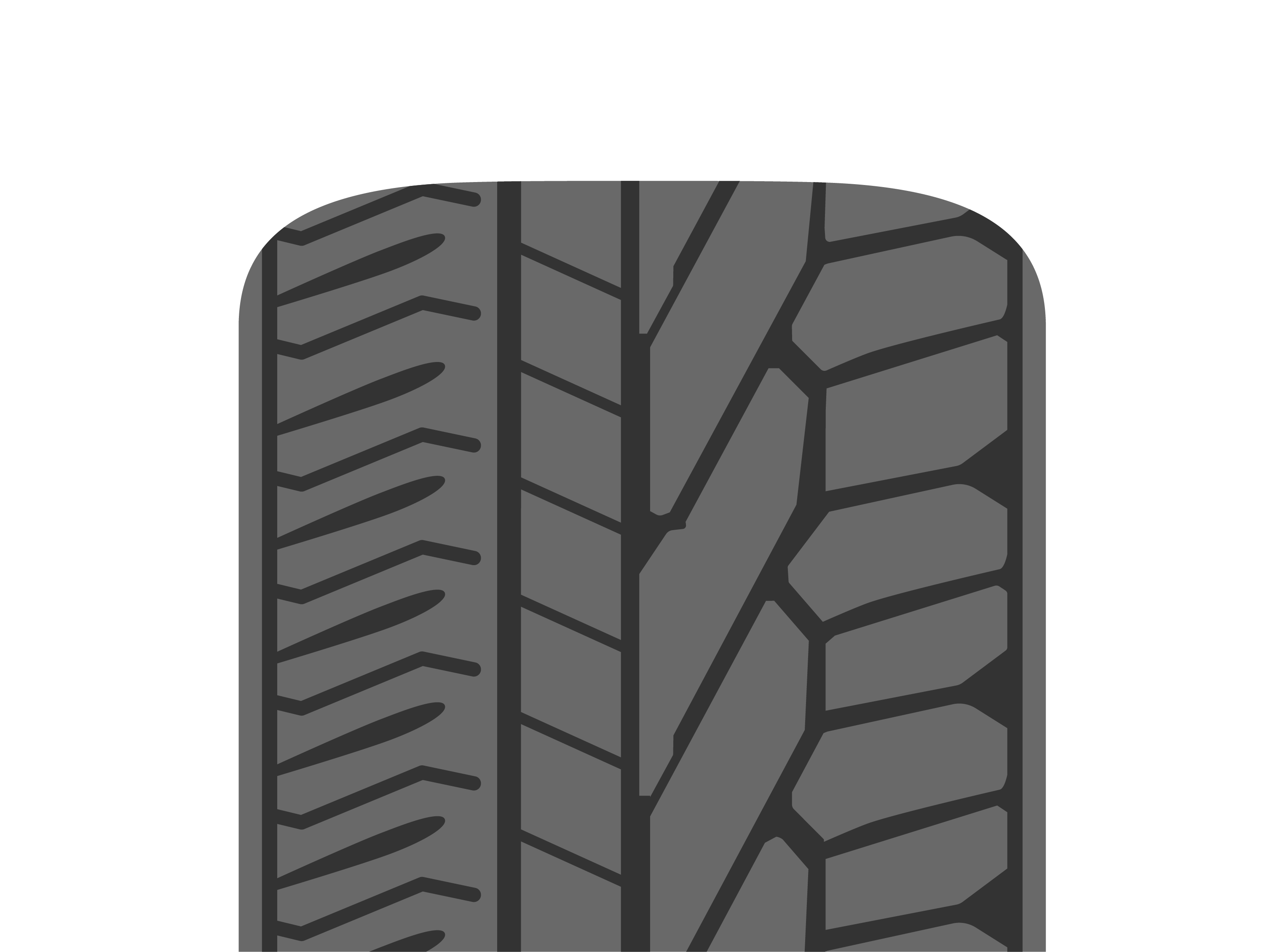 2023/09/20Tyre materialRead more
2023/09/20Tyre materialRead more